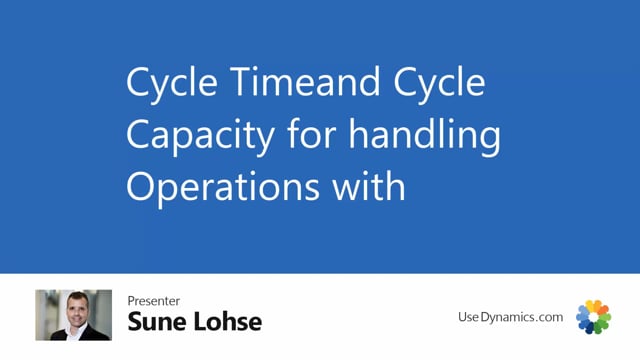
For instance, if you have a machine that takes 10 at a time, if you have an oven where you can bake 100 at a time, etc.
Let’s look at a standard routing line for this. So this is an routing I have opened, and in the Standard Business Central, you have the lot size field and the runtime field.
So we have two different ways of solving our little issue here in Standard Business Central, if it takes half an hour to produce 10, and you’re producing 10 at a time, you could add here, runtime 30 minutes, half an hour, and lot size 10.
In this scenario, in this case, it will actually create the same numbers on the production order you’re creating, but the lead time will only be 1/3, meaning three minutes, because you said the lot size was 10.
If you use the cycle time and cycle capacity that we have added, you can add the same functionality, the cycle time is 30 minutes, you create 10 as the capacity, and the runtime will be three minutes.
So the lead time on the production order created from this will be the same, costing for the production order will be the same as well, but the overview in this picture might be easier.
So if you want to add up all of those lines to figure out what is the normal average runtime for an operation for production order like this, it’s easier to understand three minutes than 30 minutes, because this is not the expected lead time, the expected lead time would be three minutes.
That’s why we’ve added it in Standard Business Central, you could use the runtime and lot size functionality.
For instance, if you know that it takes a very short time to create and run an operation, in like few seconds, you could use this functionality to say it takes five seconds to create 100 and then it will use this number.
This is certified routings, sorry about that, but that’s the one of the good functionalities using this lot size and run time together.
But if you want to use the cycle time and cycle capacity, it will be transferred to the production order so when you create a production order in here and you refresh it, it will try to enter the routing.
And as you can see from this example that I just refreshed, the first example the lot size of half an hour, lot size of 10 provides a lead time of 40 minutes which is correct because the setup time is 10.
The other example where the runtime is three minutes and you use the cycle time and cycle capacity, the lead time will be the same, but the system will understand the runtime only to be three minutes because that’s the average time per item even though it actually takes 30 minutes.

